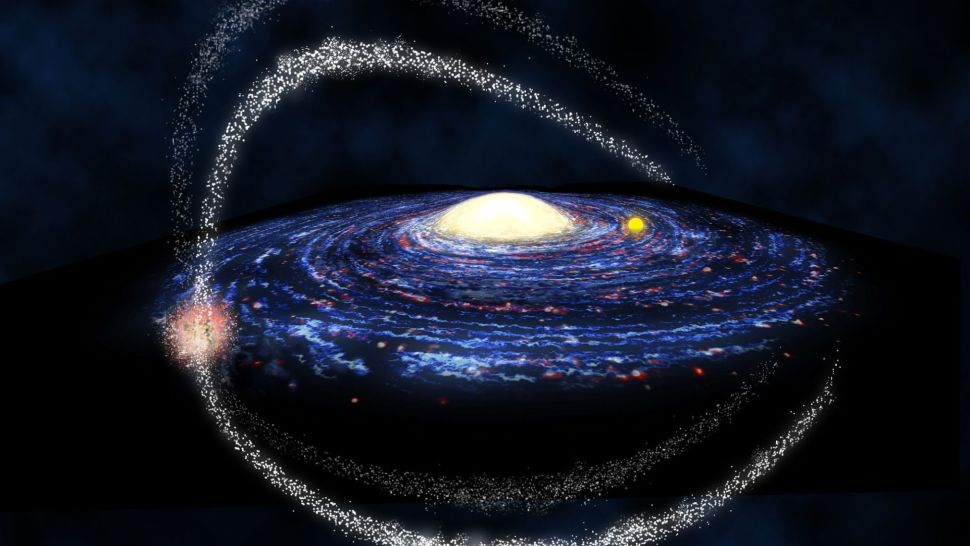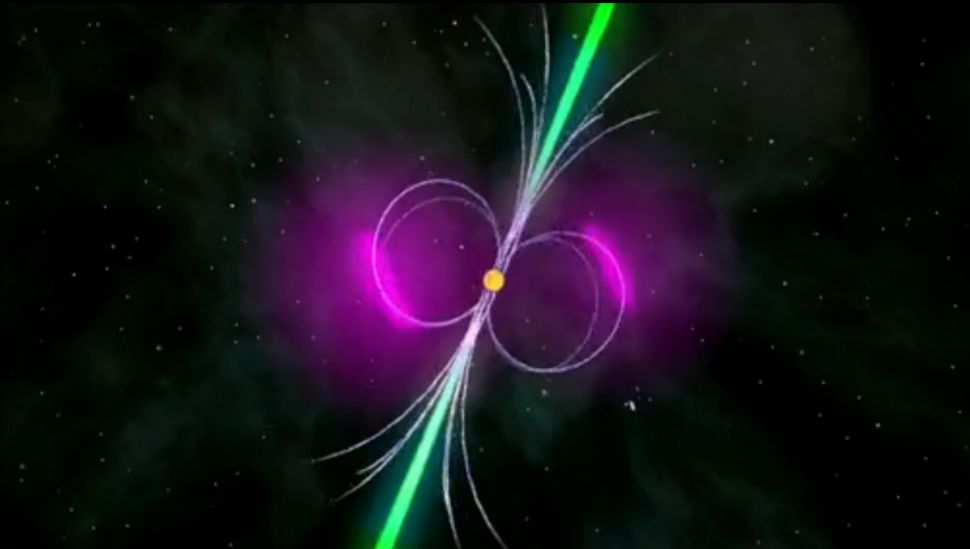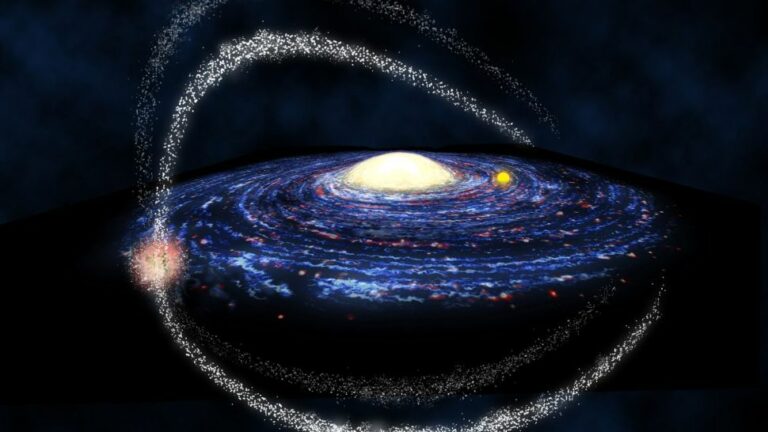Unknown gamma radiation is produced by dead stars in the Milky Way’s partner galaxy. the ray cocoon
The Fermi bubbles are massive structures extending from the Milky Way, reaching 50,000 light-years in length.
It may now be possible to understand the mysterious ultrabright gamma-ray emissions in the enormous bubbles that our galaxy has blasted forth.
The Fermi bubbles are a pair of enormous hourglass-shaped bubbles that extend from the poles of the Milky Way and span 50,000 light-years. Researchers used data from the Gaia and Fermi space telescopes to search through the Fermi bubbles to find the source of the extremely bright gamma-ray emission spots.

They determined that radiation from pulsars in the Milky Way’s satellite galaxy Sagittarius, one of these regions’ brightest and known as the “Fermi cocoon,” in the southern bubble, were responsible for it. The discovery may clarify how these collapsing dead stars function as cosmic particle accelerators, ejecting high-energy particles that ultimately result in gamma-ray emissions.
Gamma-rays had previously been mentioned as a potential byproduct of the destruction of dark matter. Gamma-rays, however, could not be a sign of dark matter if they are the product of particles being propelled by pulsars.
Viewed from Earth via the Fermi bubbles, the Sagittarius dwarf satellite galaxy is distinguished by elongated streamers of gas and stars that were torn from the galaxy’s core when its tight orbit twisted it through the disk of the Milky Way.
Young stars, dark matter annihilation, or millisecond pulsars are thought to produce gamma-ray emissions. The Sagittarius dwarf galaxy is no longer creating stars and has no stellar nurseries as a result of this dramatic gas removal, therefore its gamma-ray emissions cannot be the product of newborn stars.
Furthermore, dark matter cannot be the source of the radiation because the Fermi cocoon’s structure closely resembles the observed distribution of visible stars. (If dark matter were there, its gravitational pull would alter the cocoon’s form.) The researchers came to the conclusion that the only sources of this intense radiation may be a previously undiscovered population of millisecond pulsars, which are ultradense stellar remnants with extremely fast rotation and spin rates of hundreds of times per second.

The scientists said in a statement from the Australian National University that they were “confident there is just one possibility: quickly rotating objects known as “millisecond pulsars”. “We determined that the mystery cocoon’s ultimate source was millisecond pulsars in the Sagittarius dwarf.”
A star many times more massive than the sun that has reached the end of its existence and can no longer sustain nuclear fusion in its core gives rise, like all neutron stars, to a pulsar. As a result, it is unable to defend itself from total gravitational collapse. The gravitational collapse, which is accompanied by a powerful supernova explosion, leaves behind a star the size of a metropolis with a mass similar to the sun. A teaspoon of the material that makes up this stellar remnant would weigh 4 billion tons.
According to scientists, the fast spinning of millisecond pulsars is brought on by the accretion of material from a binary partner star, which “spins up” the dead star by adding angular momentum.
The poles of pulsars eject electrons and positrons (electron’s antimatter counterparts) due to their strong magnetic fields. The electrons transfer some of their kinetic energy when they contact with the low-energy photons that make up the cosmic microwave background (CMB), radiation that is a remnant of the Big Bang. As a result, gamma-ray photons from the CMB become significantly more energetic.
The team’s findings show that the gamma-ray emissions in the Fermi bubbles are not the consequence of dark matter annihilation by proving that the gamma-ray cocoon is caused by pulsars, the researchers claimed.
This is noteworthy because, according to study co-leader Oscar Macias, a physicist at the University of Amsterdam, the discovery of gamma rays from a dwarf satellite would constitute a smoking-gun indication for dark matter destruction. “Our finding necessitates a reevaluation of the high energy emission properties of inactive star objects, like as dwarf spheroidal galaxies, and their position as primary candidates for dark matter annihilation searches,” the authors write.
The team’s research was published online Sept. 5 in the journal Nature Astronomy.
Source:SpaceCom
Do not forget to share your opinion with us to provide you with the best posts !





0 Comments